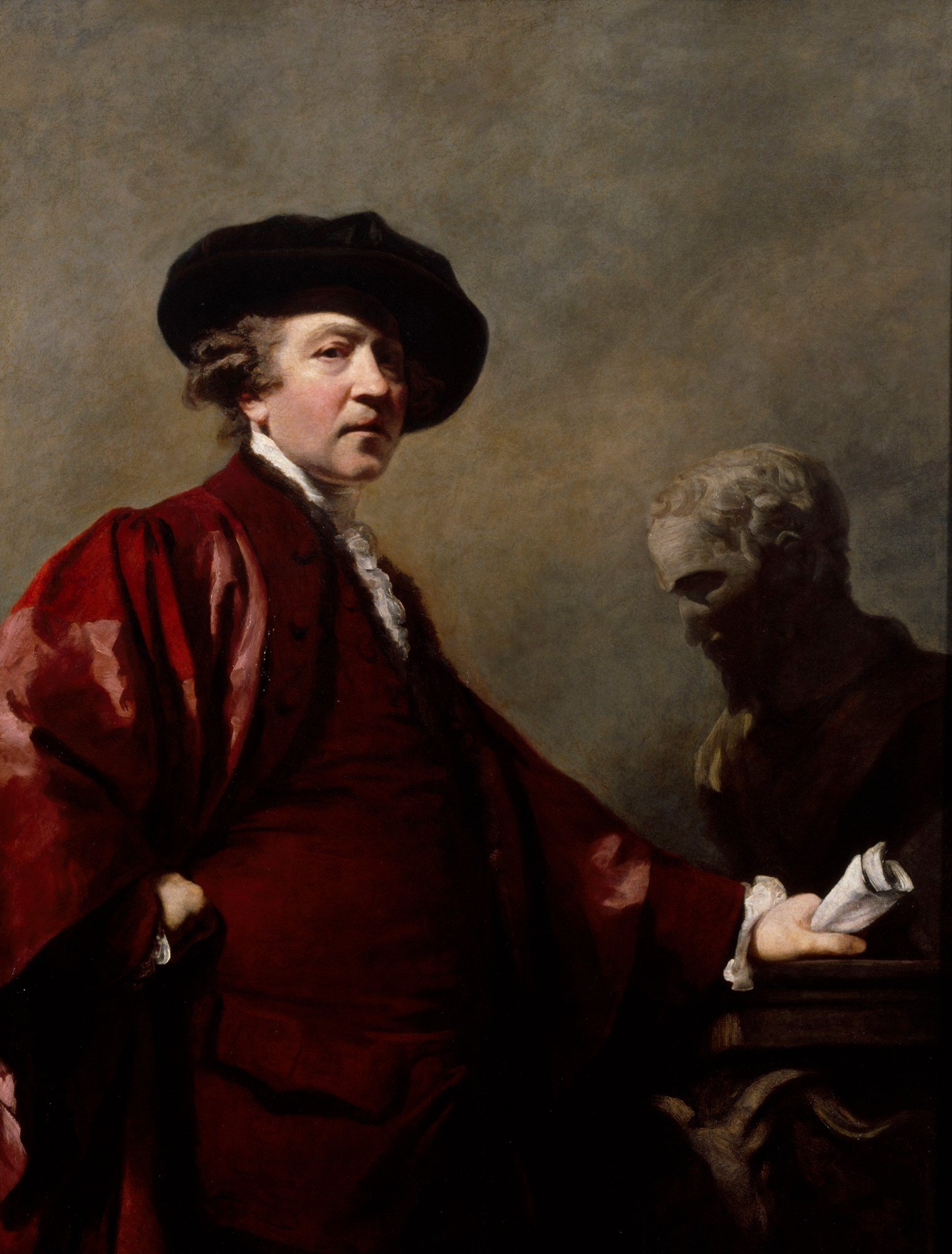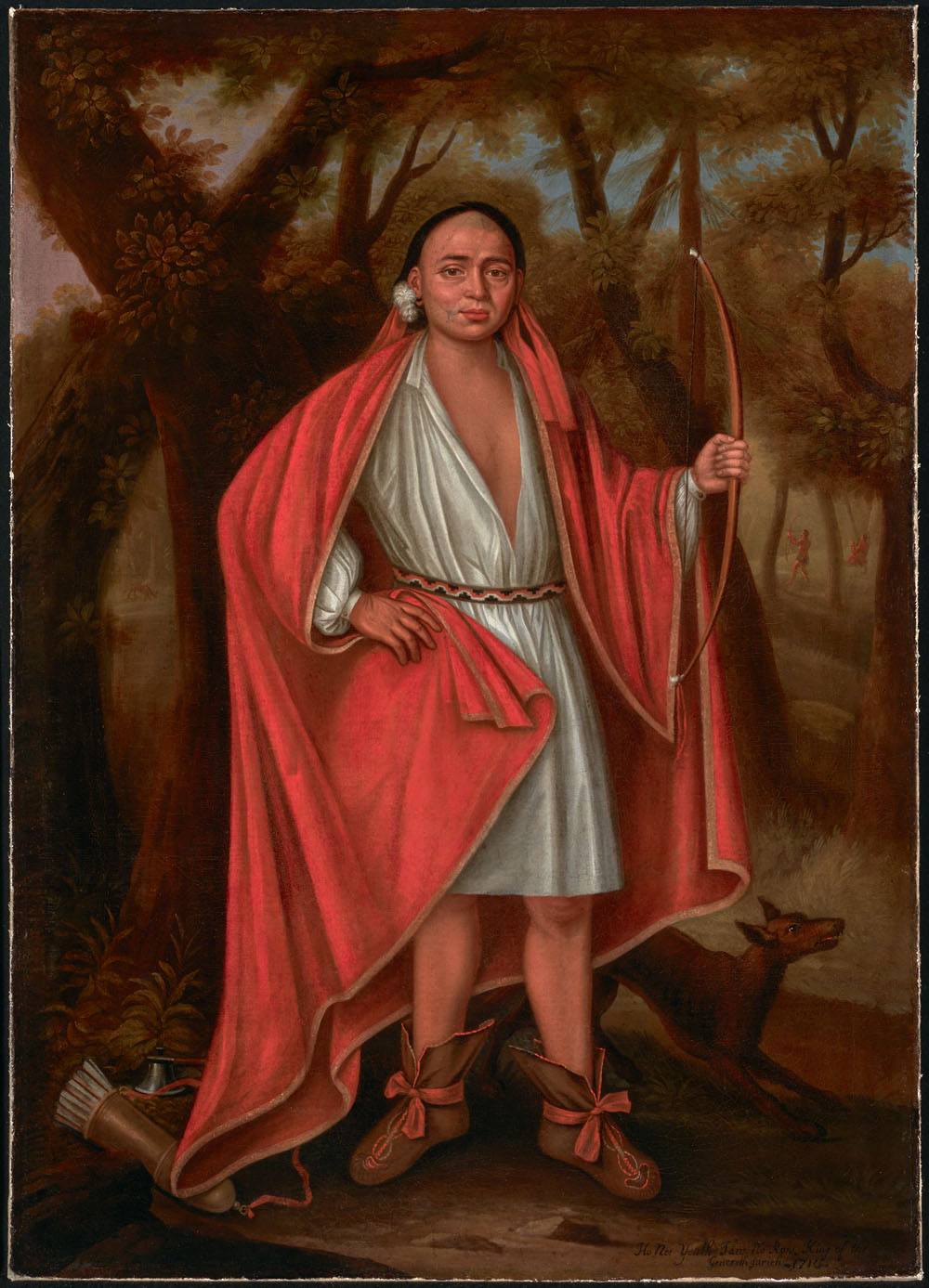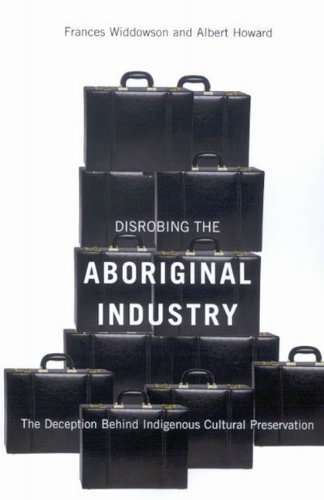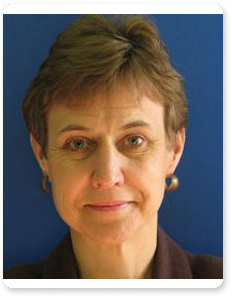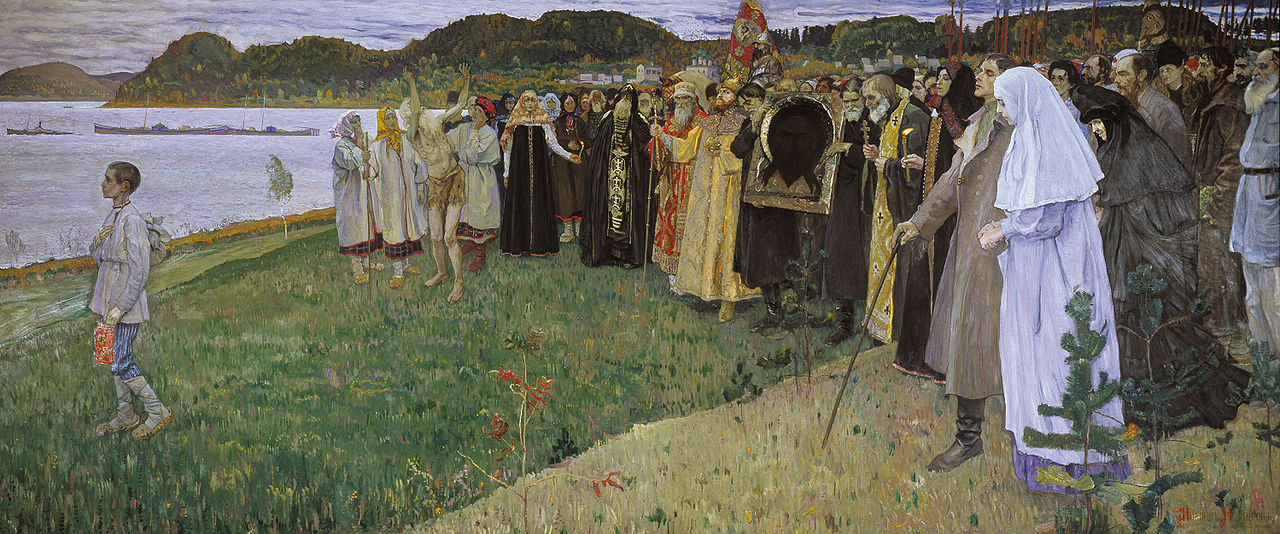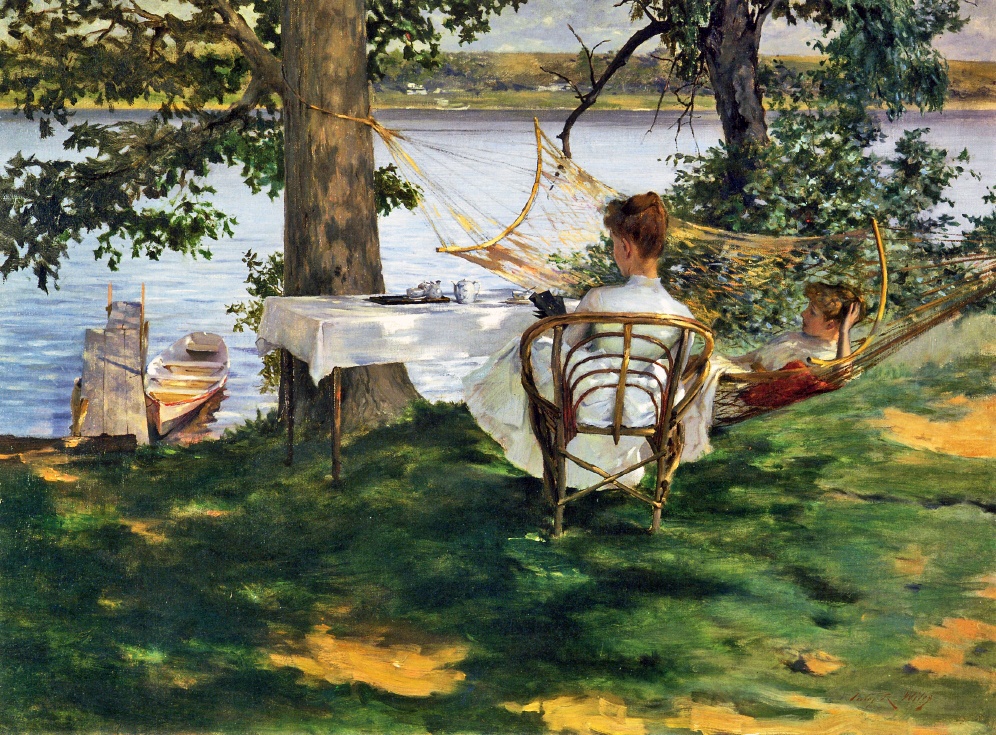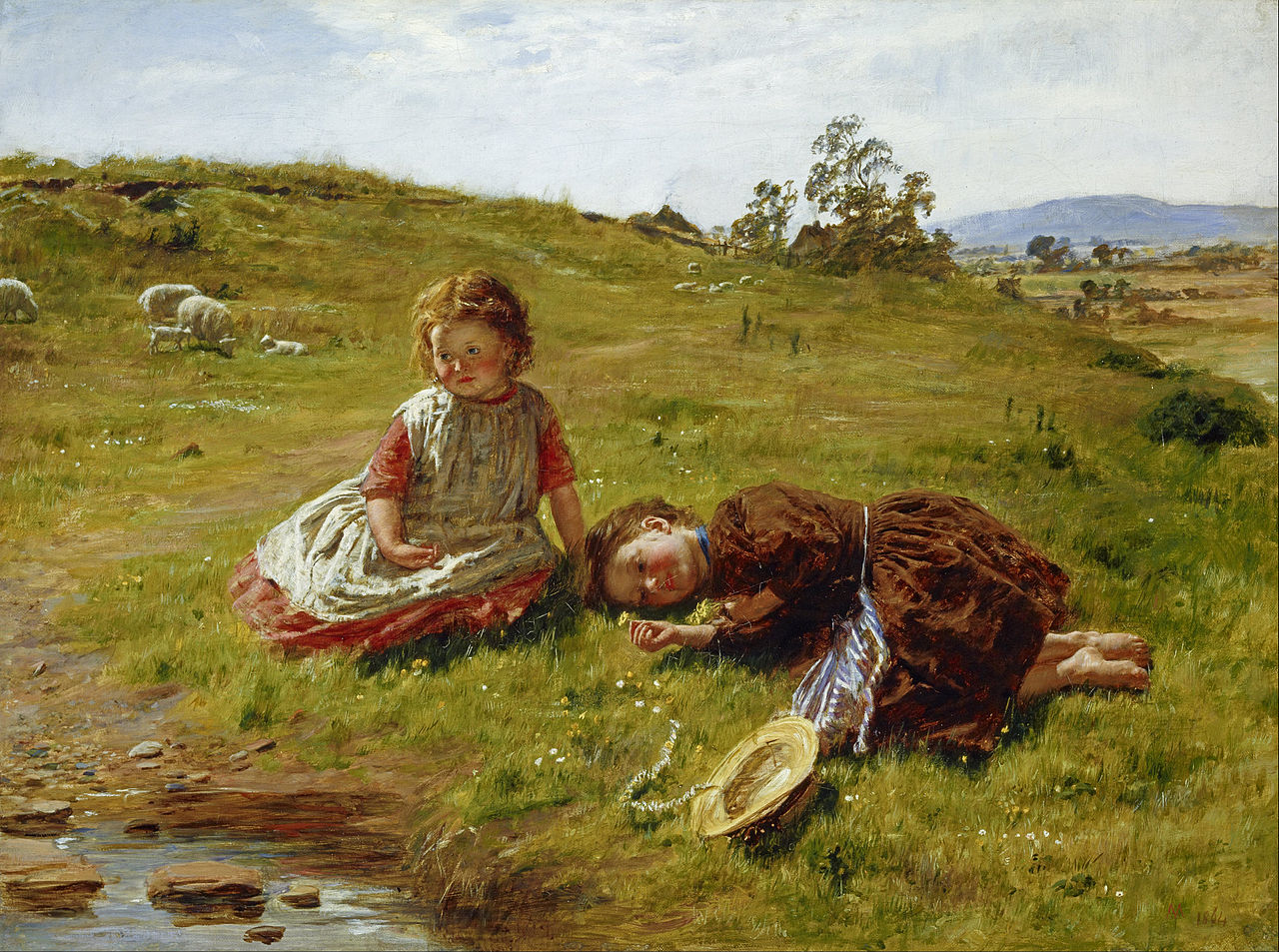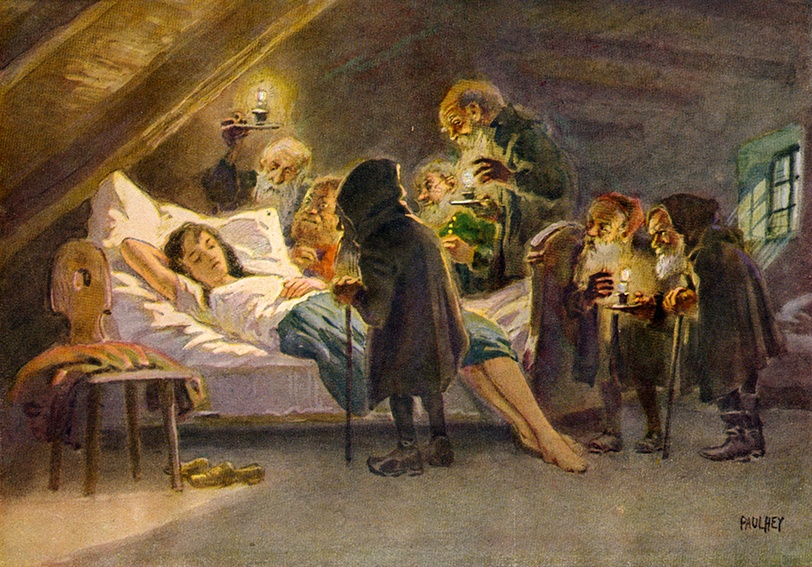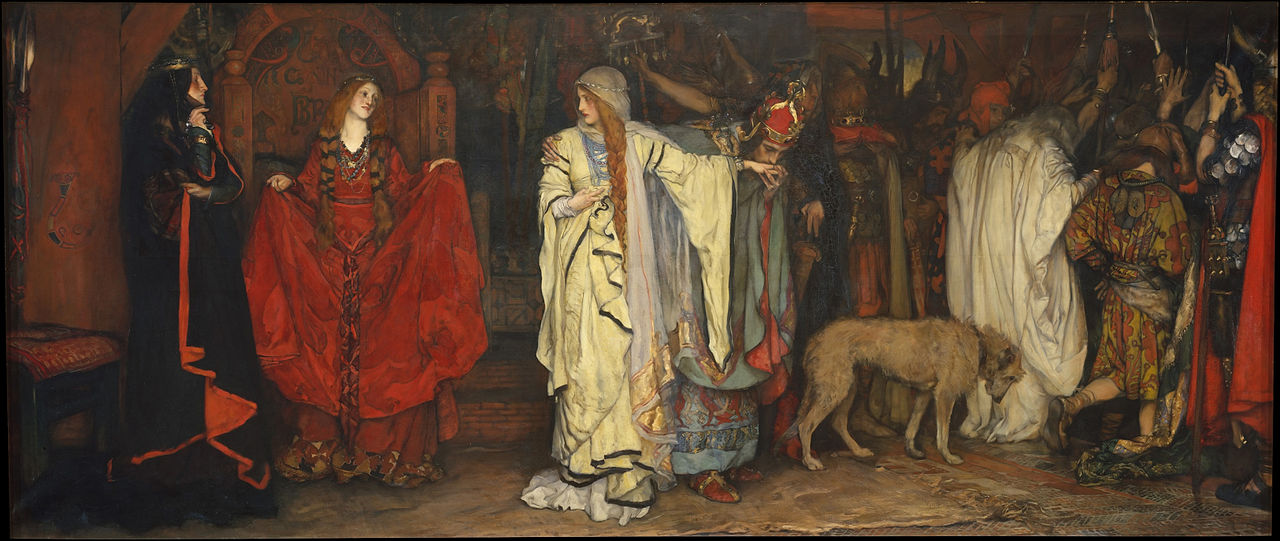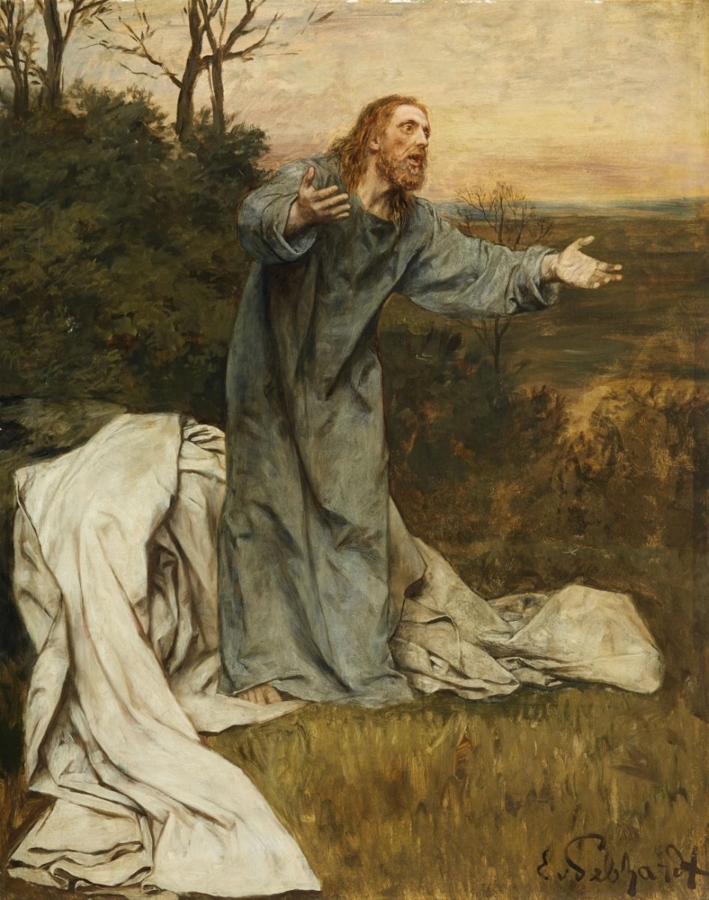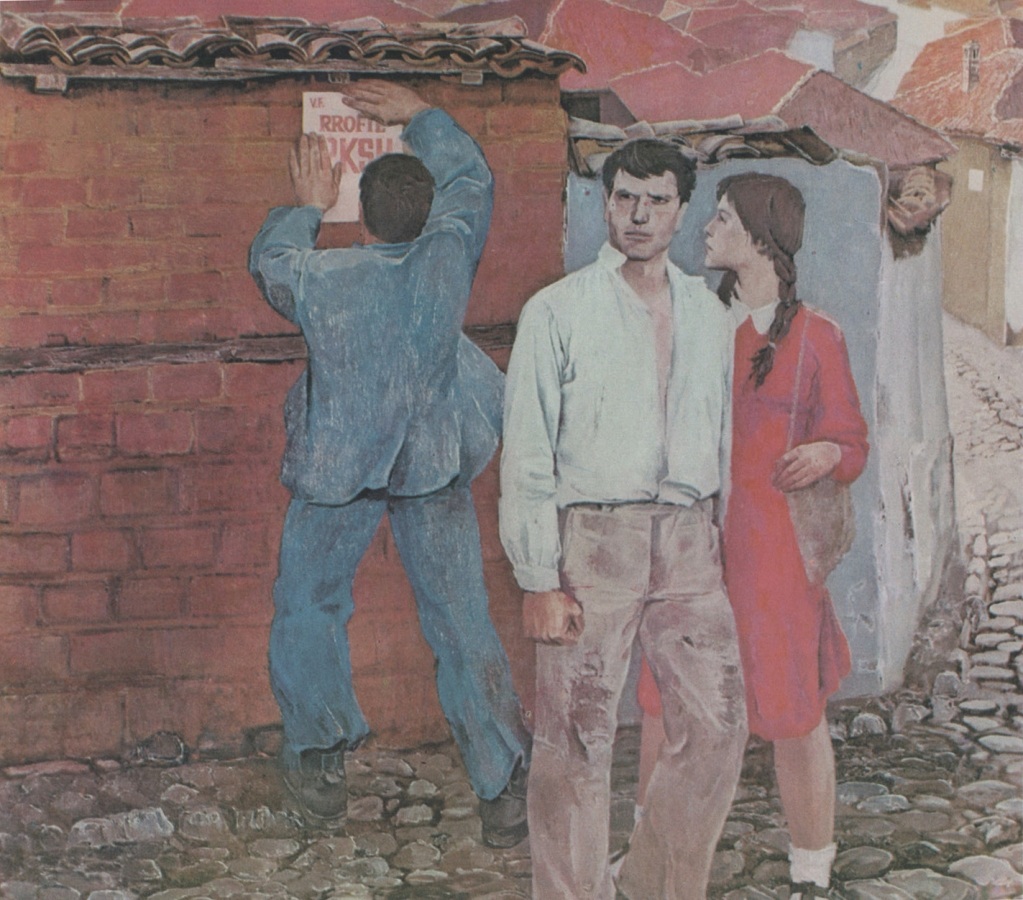In these days of changing ways, so-called liberated days, it is not only political beliefs that are getting a fresh look from a lot of people, but beliefs about all 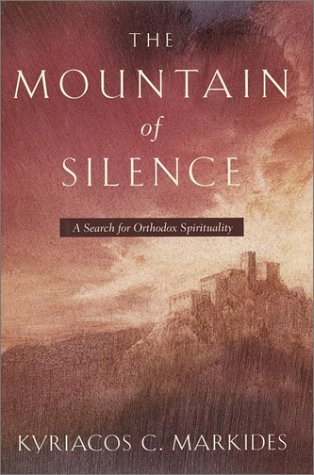 aspects of human life. These include the beliefs of traditional Christians in America, whose options for Christ-centered communal worship within an organized framework narrow every day.
aspects of human life. These include the beliefs of traditional Christians in America, whose options for Christ-centered communal worship within an organized framework narrow every day.
The Roman church is both corrupt and led by that man of perdition, Jorge Bergoglio; the degradation of ecclesiastical Protestantism is complete; evangelicals offer only Moralistic Therapeutic Deism or obeisance to Trumpian caesaropapism. This leaves as the last institution standing the Orthodox Church, which shows no signs of trimming its sails to modernism and for whom Saint John Chrysostom might as well as have died yesterday. Hence the recent surge in popularity of this 2001 book, a modern exposition of Orthodox spirituality, written by a man with a foot in both the West and the East.
That man, Kyriacos Markides, is a Greek Cypriot, whose education and academic career (in sociology) were centered in America. As he describes, until the writing of this book his spiritual life had gradually moved from stock Western academic agnosticism to an interest in various forms of mysticism, ending up, at the conclusion of this book, in an ambiguous, but very favorably disposed, relationship with Orthodoxy.
Markides also wrote an earlier book, Riding with the Lion, about the Orthodox monastic communities on Mount Athos, in Greece. Confusingly, this book, whose title refers to Mount Athos, takes places nearly exclusively on Cyprus. Regardless, the form of this book is essentially narrated dialogues between Markides and an Orthodox monk, here called “Father Maximos,” who was sent to Cyprus from Mount Athos in 1993 to form a new monastery (and who is now Bishop of Limassol, the second-largest city in Cyprus).
Other people and places appear, and there are travelogue aspects and digressions about the politics of Cyprus, but the core of the book is an ongoing conversation between those two men. The goal of these dialogues is to primarily to narrate and explicate Orthodox spirituality, with heavy emphasis on its mystical aspects.
Through his dialogues with Father Maximos, Markides develops several threads of Orthodox spiritual thought, on their own terms, in relation to Western Christian (that is, for all practical purposes, Roman Catholic) thought, and, to a lesser extent, in relation to non-Christian spirituality and even secular psychology. (Though accurate here, I hesitate to use the term “spiritual,” because it smacks of the odious phrase “spiritual but not religious,” which is code for “stupid”).
The reason that Markides was able to open his mind to Orthodoxy was his prior realization that “materialist superstition had kept Western thought stranded and imprisoned for the last three hundred years”—a realization, though only nascent, that the Enlightenment was far from the unalloyed benefit it is often portrayed. That realization is what makes this book possible; it is neither Orthodox fanboy-ism, or a cloaked attack by a skeptic, but an honest attempt to find the truth.
A substantial part of Markides’s approach is that he identifies up front, and then directly asks Father Maximos to address, problems and questions that are commonly raised in objection to Orthodox or Christian beliefs.
These include questions with a practical basis, such as whether monks are wasting their lives, or are self-centered or inward focused when they should be serving their fellow man, or whether abbots psychologically coerce vulnerable individuals to join the monastic life. It’s these questions, in fact, that Markides addresses first.
Then he turns to questions about belief, both theology and practice, including ones often asked by Protestants, such as whether icons are idols (that one is easy, but many aren’t). This segues into broader theological questions—ultimately, into the meaning of life. All this is done in dialogue; the author taped his conversations, so presumably they are accurately set forth.
The focus here is on monastic practice, but that is portrayed as merely a more perfect form of the practice to which all Christians are called. While Maximos’s explanations of the reasons for, and the value of, monasticism are best read in their entirety, they revolve around the necessity of some set of people’s “providentially assigned life’s task” to be an “exclusive preoccupation with the reality of God.”
It is apprehending and approaching that reality towards which monastic life in Orthodoxy is oriented. Such monastic life is eremitic, more so than communal (though some meals and some worship are typically communal), in the spirit of the early monastics, and is not directed toward external acts of service in the way of some Western monastics.
The vast majority of the monk’s day is devoted simply to prayer, especially the Efche (the “Jesus Prayer”), often (but not necessarily) along with some manual labor. Fasting and other forms of periodic self-denial are also important in creating the necessary focus.
Collectively, these practices are askesis, the root word of “ascetic,” but here it means spiritual athleticism, not (just) suffering through self-mortification. The repeated message is that such practices, applied to a lesser degree, are the path to holiness and union with God for all people.
In Markides’s telling (I cannot opine myself), Orthodox spirituality does not rely on strict rationality and logic nearly to the degree that Western Christianity does. Thomism, scholasticism and the like, tied to Aristotle, is not so much denigrated as regarded as incomplete (although Father Maximos comes very close to rejecting metaphysics entirely).
The ability of certain saintly men and women to directly apprehend the divine, and thereby to benefit and illuminate others, is prized and assumed much more than it would be in Catholicism, where the structures permit and recognize it, but usually not without hesitation.
This shows up most clearly in the nearly continuous references by Father Maximos to Elder Paisios, an Athonite monk and wonderworker who died in 1993. But signs and wonders, including such dramatic events as the physical appearance of Christ Himself to individual monks, as well as the appearance of saints in the flesh, and direct physical contact with demons and angels, are held as normal, or at least not infrequent, events in Orthodox monasticism, which (again, in Markides’s telling) has not been infected with Western materialism and skepticism. Markides himself does show some skepticism about the frequency of reported miracles, including querying whether they might be explained by science or hallucinations, but by no means wholesale skepticism.
It’s not just materialism and skepticism that can undermine askesis, though, but also an over-exaltation of knowledge itself. As Father Maximos says, “Spiritual knowledge by itself does not lead us to God. It may in fact push us in the opposite direction.
We may succumb to the temptation and fantasize that because we are knowledgeable we are especially favored by God. It could stimulate our pride and vanity.” Speaking from experience, I agree with this—not that I have all that much spiritual knowledge, but I am keenly interested in theology, and too proud of the many books I have on it (though, even worse, part of my pride is in impressing visitors with my books—bad me).
Still, as I discuss below, and as Markides also seems to feel, despite the potential pitfalls, I don’t think metaphysics or other forms of rational spiritual knowledge should be denigrated excessively, especially as they relate to society overall.
This all fits within the overriding theme that runs through all Markides’s discussions with Father Maximos, which is theosis—the Orthodox belief that not only is our purpose and goal union with God, but that goal can be approached in this life, and that through it, in this life or the next, the believer can directly partake of the divine, in a form of ecstatic communion.
This state is reached not through study, or logical deduction, but by spiritual exercise devoted to reaching total humility and indifference to material things, while also being totally open to God. To reach theosis, both askesis and spiritual guidance are necessary, obtained from the lives of the saints and (ideally) from an elder. (Implicit in this is that self-guidance by reading the Bible in isolation to reach one’s own conclusions, the hallmark of Protestantism, is inadequate and foolish).
Theosis is a superseding goal—as Maximos says, “Christ didn’t come into the world to teach us how to become good fellows, how to behave properly, or how to live a righteous life in this world.” It’s not that those things are bad; rather it is that “the ultimate goal is to become perfect in the same way as our Heavenly Father is perfect, to become one with God.”
Several subthemes also show up repeatedly. One is the importance of overcoming temptations—not merely temptations as traditionally viewed in the West, where we picture Satan on our shoulder, but various troubles and difficulties, as well as good things that may happen, all of which are opportunities for spiritual development requiring an appropriate response.
An important category of these is logismoi, assaultive thoughts, defense against which is a matter discussed at considerable length in this book, with successful defense being a critical step in spiritual development, the defense resulting from repentance and humility. Another is the importance not only of personal humility, but of actively seeing the image of God in every other human being, no matter how evil he may act, and of loving that person as a consequence—and even loving demons (“as suffering entities,” despite their evil).
A third is that freedom does not consist in following one’s own desires, but being liberated from slavery to passions, and instead subordinating oneself to Christ. This is, of course, the only concept of freedom held in the West prior to the Enlightenment (not always with reference to Christ, naturally, since the ancient Greeks held it), but it has been mostly forgotten in the West, except, it seems, by antiquarians (though my guess is that its time is coming around again). None of these themes is exclusive to Orthodoxy, of course, but the emphasis on them seems much greater than in Western Christianity, or at least modern Western Christianity, of any brand.
It is important to note that in many cases, the Orthodox do not necessarily hold theological positions on which a final position has been reached, both because there is no single authority (other than a council and the approval of the laity) that can finally decide a matter, and because reaching a final decision is regarded as less important than in Catholicism, within certain basic parameters.
That said, three theological discussions in this book held special interest for me. The first is the possibility admitted in Orthodoxy, but almost totally denied in Catholicism, of the apocatastasis—the universal reconciliation, in which all humans, or even all created beings, including the Devil, will reach theosis. The Orthodox reject Purgatory, but a mainstream thread of Orthodox thought functionally treats Hell as Purgatory.
Markides focuses on it, but it’s hard for me to tell how prominent this line of thought is in Orthodoxy. It’s a lot more prominent than in the Roman Church, though, which mostly rejects it as heresy, although if pressed, some theologians (Hans Urs von Balthasar being the most notable modern example) will admit the possibility.
A second is the idea that the point of Christianity is not to improve this world. Father Maximos has never heard of “liberation theology” (monks are deliberately not up on the news). If he had heard of it, he would be revolted. As Father Maximos tells Markides, “[Christ] was not trying to make this world better and more just. Whatever Christ offered us through the Gospel had a deeper meaning, the salvation of humanity, our eternal restoration within the Kingdom of God.” No doubt, “Christ did go about doing good. . . . But that was not His chief mission for coming into the world.”
In the modern world, for the majority of Western Christians, this is the grossest heresy, or would be, if they knew what a heresy was. Certainly, the Presbyterian church my wife and I recently abandoned saw this as their only goal—implementing a left-wing vision of justice, cribbed from Rawls, not Romans.
In the words of that church’s new pastor, in the last sermon we heard before our family vomited him and his works out of our mouth, we are required to show that we are Christian to others, and our sole purpose in so doing is to aggressively demonstrate to non-Christians that we “reject theologies of hatred and exclusion”—that is, our chief goal as “Christians” must be to demonstrate our rejection of any form of traditional Christianity. So long, sucker. (I suppose my attitude here towards the pastor shows I am not making much progress on the path to theosis, though).
A third is the question of whether God wills a reason for all happenings. This seems to me clearly false; I agree strongly with the Orthodox theologian David Bentley Hart, who in his meditation on the 2004 Indonesian tsunami, The Doors of the Sea, concluded that “God will not unite all of history’s many strands in one great synthesis, but will judge much of history false and damnable; that he will not simply reveal the sublime logic of fallen nature but will strike off the fetters in which creation languishes; and that, rather than showing us how the tears of a small girl suffering in the dark [a reference to a passage from Dostoevsky] were necessary for the building of the Kingdom, he will instead raise her up and wipe away all tears from her eyes—and there shall be no more death, nor sorrow, nor crying, nor any more pain, for the former things will have passed away and he that sits upon the throne will say, ‘Behold, I make all things new.’ ”
But Father Maximos is just as emphatic that “Nothing, absolutely nothing happens in the Universe without a deeper meaning to it.” I don’t buy it. I could harmonize Hart’s and Father Maximos’s statements, since “deeper meaning” is not the exact same thing as “willed reason,” but I think it would be sophistry—Hart’s and Father Maximos’s seem to be actually opposed opinions, and I am not sure which is closer to the Orthodox mainstream.
Regardless, I just can’t stand it when people say “I believe everything happens for a reason.” (It’s especially annoying when said by people who don’t believe in God at all, though. What reason is that then, exactly)? It doesn’t; much of history is false and damnable. This is also part of why theodicy has never seemed like a significant problem to me. God doesn’t owe us anything, and much less does he owe us current happiness. That’s easy for me to say, blessed beyond all words and measure. But it still seems obvious to me.
Anyway, on a more abstract level, and given that much of my thinking nowadays revolves around how, perhaps, the West can be dragged out of its dead end and return to flourishing, and that part of that flourishing relates to purely secular matters, I find the relative approaches of Orthodoxy and Western Christianity illuminating in relation to that goal.
I do not think it is a coincidence that the West, rather than the East, created the modern world. By “modern world,” I mean the approach to thinking, and thus to science, that ended in the Scientific Revolution and therefore the Industrial Revolution (to neither of which, of course, the Enlightenment had any relevance at all, so we can peel away the Enlightenment and return to continued material flourishing, or at least that’s my theory).
Certainly, the Roman East had less opportunity—under siege from Islam (which itself could never have created the modern world), not to mention it was abused at times by the West (the Orthodox remember the Fourth Crusade, forgotten in the West). But the mystical, otherworldly focus that, at least in this book, strongly characterizes Orthodoxy, and the related downplaying of high rationality and metaphysics, seems to me inherently likely to pinch material advancement.
The Western approach has its pitfalls, obviously, among them those outlined by Brad Gregory in The Unintended Reformation. I also often wonder if a truly wealthy society can be a virtuous society at all.
Not to mention that many aspects of modern science can be, and are being, used for utterly pernicious purposes, such as transhumanism and better ways of killing infants in the womb, so sometimes I wonder if we’d not all be better off, in the long run, living in the fourth century A.D.
In any case, it seems to me that Markides’s analogy of Orthodoxy and Western Christianity as “two lungs,” both contributing air and life, is a good one, and one that might conduce to a real renaissance in both West and East. And, despite Orthodox resentment against and distaste for the Roman Church, a rapprochement among traditional Catholics and the Orthodox is probably a necessary element to fight the forces that would destroy both, so some form of joint action would have both spiritual and secular benefits.
Finally, at the risk of seeming like a curmudgeon, I note (as I often do) that the book isn’t perfect. As probably in any book by a sociologist who likes to deal with shamans, there are irritating parts and odd claims about non-religious matters.
The frequent side references to the “eco-peace villages” that Markides’s wife apparently was devoted to, whatever those are, grate (mostly because they sound nonsensical).
Markides treats it as something other than ludicrous when someone asks him what penance the monks have done for “having killed millions of women as witches.” You just have to glide over those sections, though, and focus on the words of Father Maximos, to really receive benefit. I suggest you do that, today.
Charles is a business owner and operator, in manufacturing, and a recovering big firm M&A lawyer. He runs the blog, The Worthy House.
The photo shows, “In Russia, Soul of the People,” by Mikhail Vasilyevich Nesterov. This was one of the last religious paintings by Nesterov before the Revolution of 1917.
